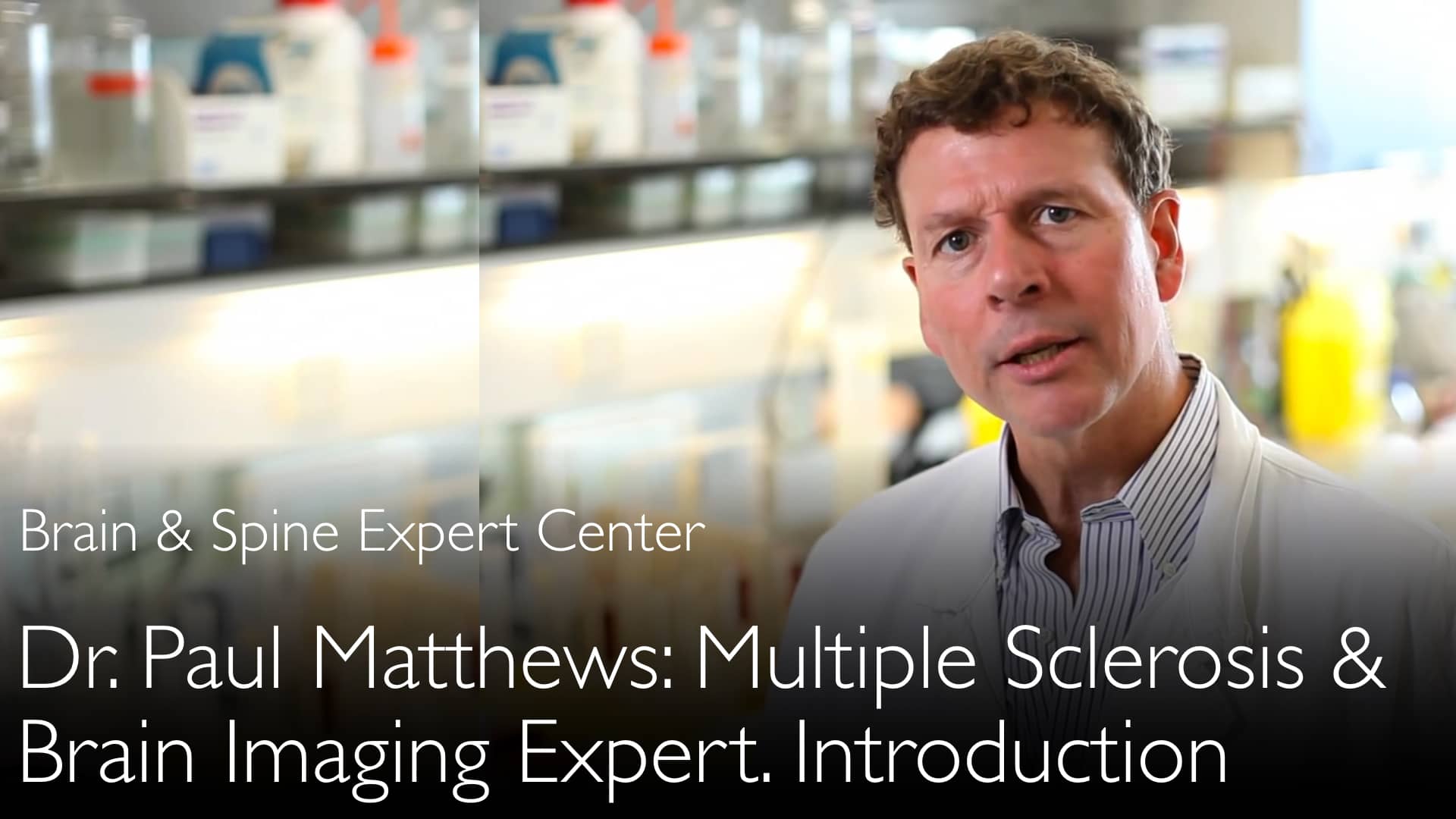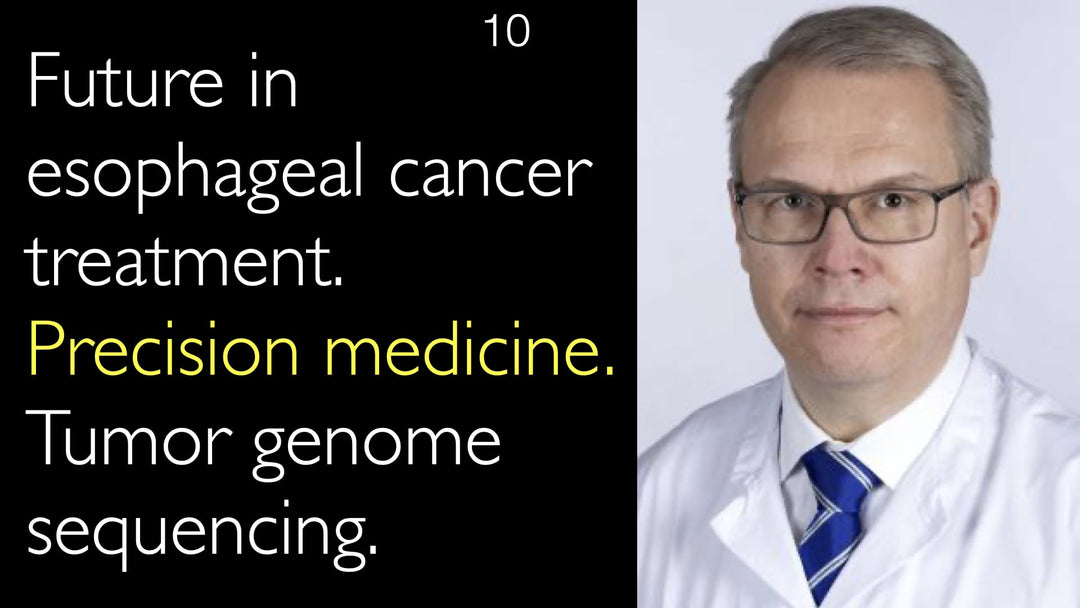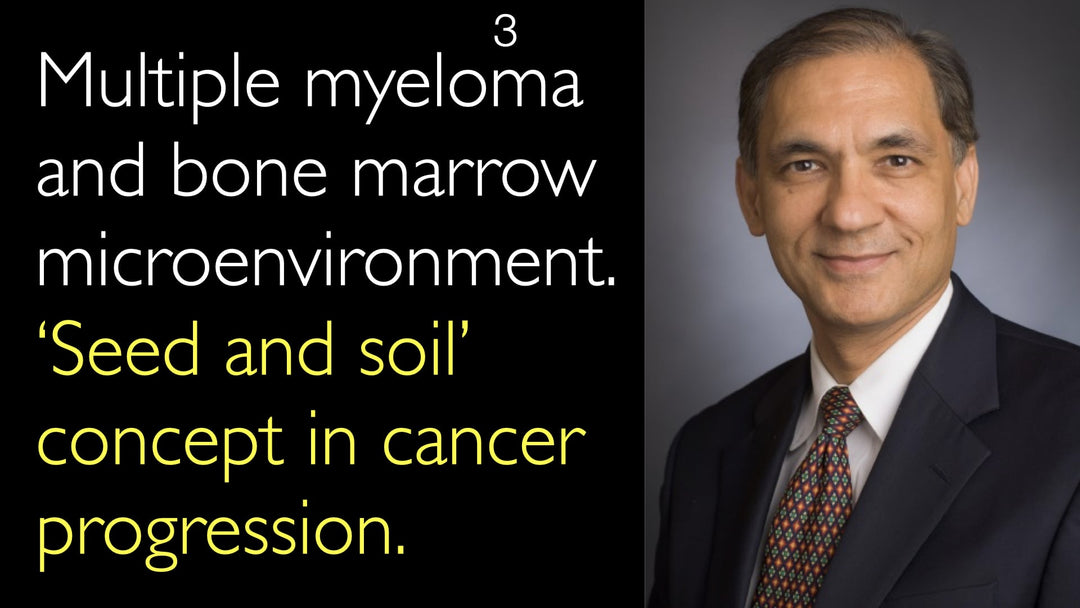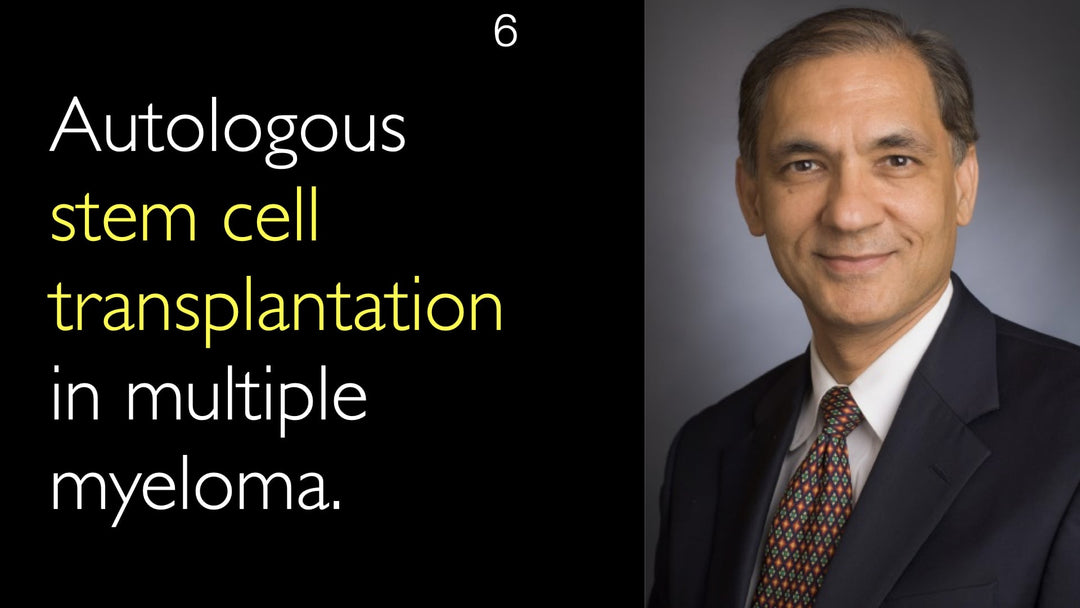O renomado especialista em esclerose múltipla e neuromielite óptica, Dr. Paul Matthews, aborda os principais avanços da medicina personalizada para a EM. Ele detalha como pesquisas genéticas confirmaram a EM como uma doença autoimune primária. O Dr. Matthews também descreve a descoberta do anticorpo aquaporina-4, que diferencia a neuromielite óptica da esclerose múltipla. Destaca ainda como a medicina de precisão viabilizou a reintrodução segura do natalizumabe (Tysabri) por meio do gerenciamento do risco de LEMP. Esses progressos permitem diagnósticos mais precisos e decisões de tratamento personalizadas.
Avanços na Medicina Personalizada para o Diagnóstico e Tratamento da Esclerose Múltipla
Navegar para a Seção
- Avanços Genéticos na EM
- Descoberta do Anticorpo de Aquaporina-4
- Espectro da Neuromielite Óptica
- Medicina de Precisão e Tysabri
- Manejo do Risco de LMP
- Futuro dos Tratamentos para EM
- Transcrição Completa
Avanços Genéticos na EM
O Dr. Paul Matthews, MD, aponta a genética como uma das três principais áreas de avanço na esclerose múltipla. Grandes estudos de associação genômica ampla tiveram início no final dos anos 2000, com um consórcio internacional de cientistas colaborando nessa pesquisa inovadora.
O trabalho trouxe duas implicações importantes. Primeiro, evidenciou o papel predominante de genes inflamatórios como fatores de suscetibilidade, reforçando geneticamente a visão de que a EM é uma doença autoimune primária.
Descoberta do Anticorpo de Aquaporina-4
A descoberta do anticorpo de aquaporina-4 representa outro avanço crucial, devido à sua forte relação com a neuromielite óptica (NMO). Conforme explica o Dr. Paul Matthews, MD, esse achado permitiu caracterizar a NMO como uma entidade nosológica distinta, separada da esclerose múltipla clássica.
Essa distinção é vital para o cuidado do paciente, pois possibilita a escolha do tratamento adequado desde o diagnóstico. Pacientes com NMO não respondem bem às terapias convencionais para EM e podem até apresentar piora com seu uso.
Espectro da Neuromielite Óptica
A compreensão da neuromielite óptica se expandiu significativamente. O Dr. Paul Matthews, MD, destaca que o espectro da NMO é muito mais amplo do que se imaginava, o que ajuda os médicos a identificar casos que antes seriam erroneamente diagnosticados como EM.
O diagnóstico preciso é essencial, uma vez que as abordagens de tratamento para NMO e EM diferem substancialmente. Essa precisão melhora diretamente os resultados ao garantir a terapia mais adequada.
Medicina de Precisão e Tysabri
A medicina de precisão permitiu retomar o uso do natalizumabe (Tysabri) no tratamento da esclerose múltipla. O Dr. Anton Titov, MD, discute esse avanço com o Dr. Matthews. O medicamento enfrentou risco de desaprovação regulatória após ser associado à leucoencefalopatia multifocal progressiva (LMP).
Essa infecção cerebral grave inicialmente ameaçou o futuro da droga, mas a medicina de precisão ofereceu uma solução, com o desenvolvimento de métodos para identificar pacientes em risco de LMP.
Manejo do Risco de LMP
O Dr. Paul Matthews, MD, descreve como os médicos agora gerenciam o risco de LMP com o natalizumabe. Os pacientes podem ser monitorados continuamente para avaliar serialmente seu risco, permitindo decisões informadas em conjunto com seus médicos.
Isso inclui decidir sobre o uso do Tysabri e a duração do tratamento. Essa estratégia de manejo de risco reintroduziu o natalizumabe como uma opção eficaz e segura para a EM.
Futuro dos Tratamentos para EM
O modelo colaborativo do consórcio genético tem implicações que vão além da esclerose múltipla. O Dr. Paul Matthews, MD, ressalta como cientistas de todo o mundo uniram esforços com um objetivo comum, compartilhando dados e disponibilizando resultados livremente para a comunidade médica.
Essa abordagem permitiu consolidar grandes volumes de dados necessários para avanços. Tanto o Dr. Anton Titov, MD, quanto o Dr. Matthews concordam que esse modelo continuará a impulsionar a medicina personalizada em condições neurológicas.
Transcrição Completa
Dr. Anton Titov, MD: O senhor publicou uma revisão sobre avanços no diagnóstico e tratamento da esclerose múltipla na renomada revista Nature Reviews Neurology. Intitulada "Década em revisão: esclerose múltipla. Novas medicações para esclerose múltipla. Medicina personalizada para esclerose múltipla", a revisão aborda os principais progressos na medicina personalizada para a EM. Quais são eles?
Dr. Paul Matthews, MD: A terceira área de avanço na esclerose múltipla está na genética, como mencionamos anteriormente. Esse trabalho começou no final da primeira década do século, com os primeiros grandes estudos de associação genômica ampla na EM. Os resultados, publicados por um consórcio internacional, representaram um marco por duas razões.
Primeiro, destacaram claramente a predominância de genes inflamatórios como fatores de suscetibilidade, reforçando que a EM é uma doença autoimune primária.
Segundo, o trabalho tem implicações profundas para o diagnóstico e tratamento da EM e da medicina em geral. O consórcio reuniu cientistas de todo o mundo, que colaboraram com um propósito comum, compartilhando dados e disponibilizando os resultados livremente. Isso permitiu consolidar os grandes volumes de dados necessários.
O quarto avanço foi a descoberta do anticorpo de aquaporina 4 e sua forte relação com a neuromielite óptica (NMO), o que permitiu definir a NMO como uma entidade distinta da esclerose múltipla tradicional.
Isso possibilita identificar corretamente os pacientes com NMO desde o diagnóstico e administrar o tratamento adequado, já que eles não respondem bem — e podem até piorar — com as terapias convencionais para EM.
Além disso, o espectro da NMO foi bastante ampliado, mostrando que a condição é mais abrangente do que se pensava.
Dr. Anton Titov, MD: A medicina personalizada na EM tem sido empolgante, especialmente no resgate do uso do Natalizumabe (Tysabri) após a associação com a leucoencefalopatia multifocal progressiva (LMP). Inicialmente, a LMP representou uma ameaça à aprovação regulatória do medicamento, mas desenvolvemos métodos para identificar pacientes em risco.
Dr. Paul Matthews, MD: Agora podemos monitorar os pacientes de perto ao longo do tempo, avaliando serialmente o risco de LMP, o que permitiu reintroduzir o natalizumabe no tratamento da EM.
Dr. Anton Titov, MD: Assim, pacientes e médicos podem tomar decisões racionais sobre o uso e a duração do tratamento com o Tysabri, uma medicação eficaz para a EM.








